I’ve built two successful YouTube channels, one in the area of business and entrepreneurship, and the other related to my passion for collecting Pokémon cards. Over time, each have earned hundreds of thousands of dollars.
It didn’t happen overnight, but it wouldn’t have happened at all if I didn’t start somewhere (learning a lot of lessons on the way). Here’s a step by step approach to starting your YouTube Channel in 2023.
1. Choose your YouTube channel’s niche
Choosing your niche is the first and most important step in starting a successful YouTube channel.
As I often say: the riches are in the niches.
Your niche is the topic or category that your channel will focus on.
You can build a YouTube channel that supports your existing business, or if you’re starting from scratch, choose a niche based on an interest, passion, or area of expertise.
It’s important to narrow your YouTube channel’s focus down. Going too broad at the start means more competition and a much harder time getting seen. In fact, this was a problem my initial YouTube channel had and why it didn’t grow for years. People were confused: was it for podcasters or for affiliate marketers? Was it for people learning video or learning how to speak on stage?
Once I got clear on who the channel was for, growth happened much faster.
2. Research your YouTube niche’s competitors
Once you’ve chosen your niche, it’s important to research your competitors. This means looking at other channels that create similar content. By analyzing competitors, you can see what’s working well and what you can do better. You can also use this information to create a unique value proposition for your channel that sets you apart.
A Simple Trick: Not all videos on YouTube have this, but many have a graph located above the timeline. This is a retention graph and shows you what parts of a video were the most replayed. Paying attention to this retention graph is a great way to learn what a particular audience already likes and enjoys on other channels.
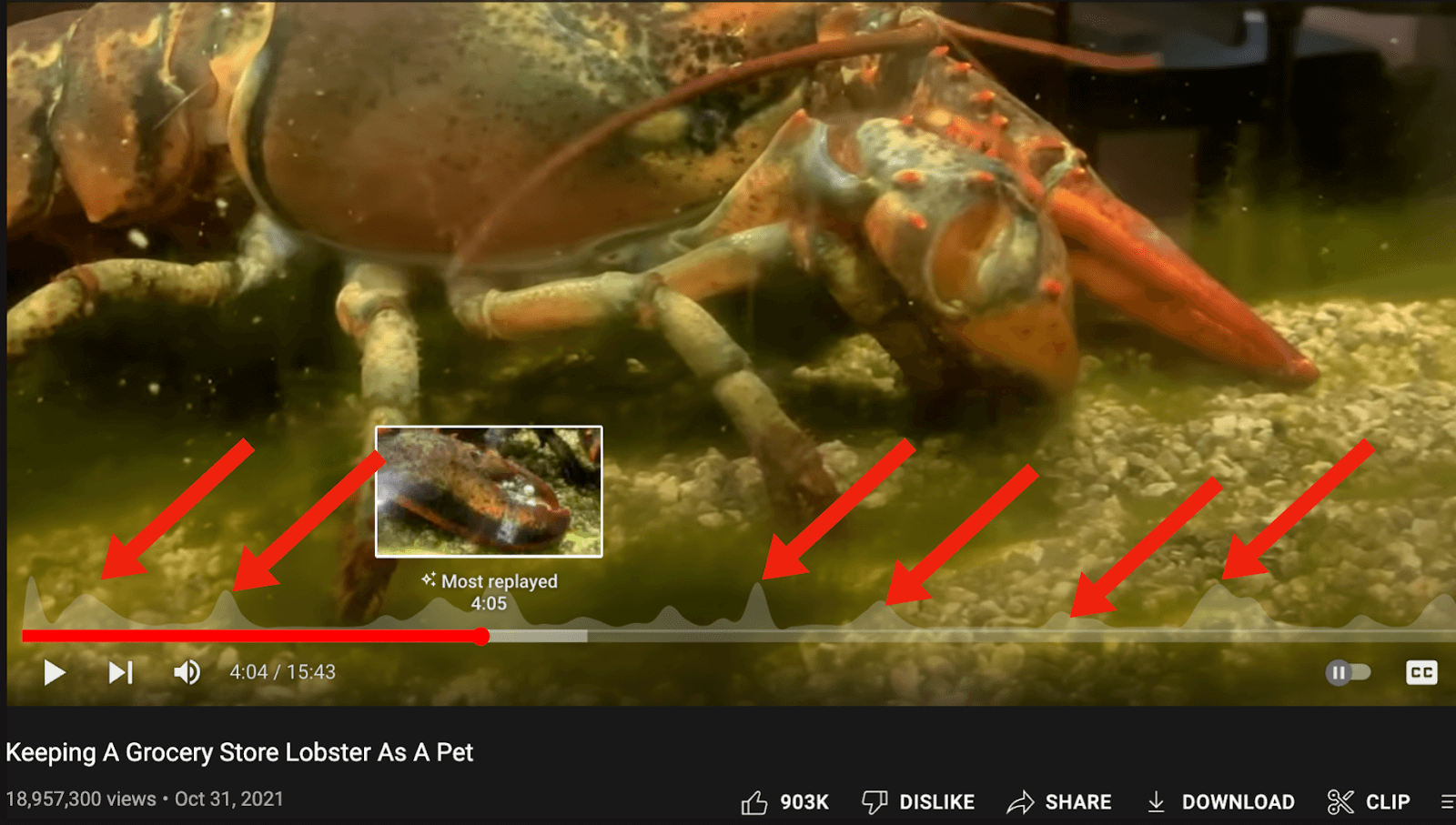
3. Develop your brand on your YouTube channel
Your brand is what sets you apart from your competitors. It includes your channel name, logo, and overall style. Take some time to develop a brand that reflects your niche and personality. This will help you build a consistent image across all of your videos and make it easier for viewers to recognize your channel.
The name and appearance of your channel encompass your brand, and in the beginning you’ll have to make some choices (that are not permanent and can be changed later). Over time, your brand also becomes your voice, and the types of videos you create for your specific audience.
Speaking of the look of your brand, your brand styling may include things like fonts or the colors you use. Check out the Charli Marie logo in the below example and the purple motif that repeats throughout her channel and videos:
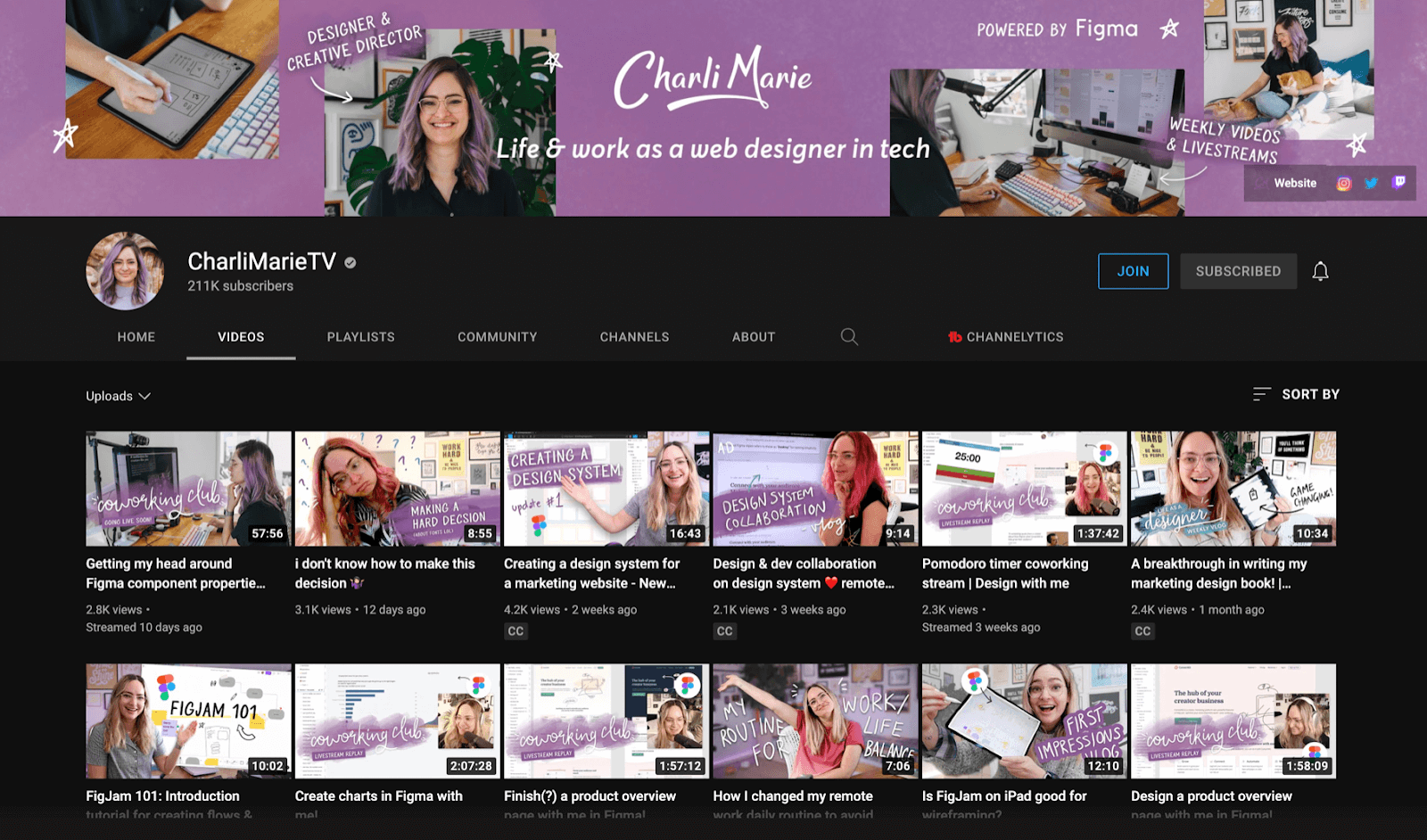
Your brand can be based on your theme, and your channel artwork can be based on the advice that you know you’ll be offering, like the Dad, How Do I? channel.
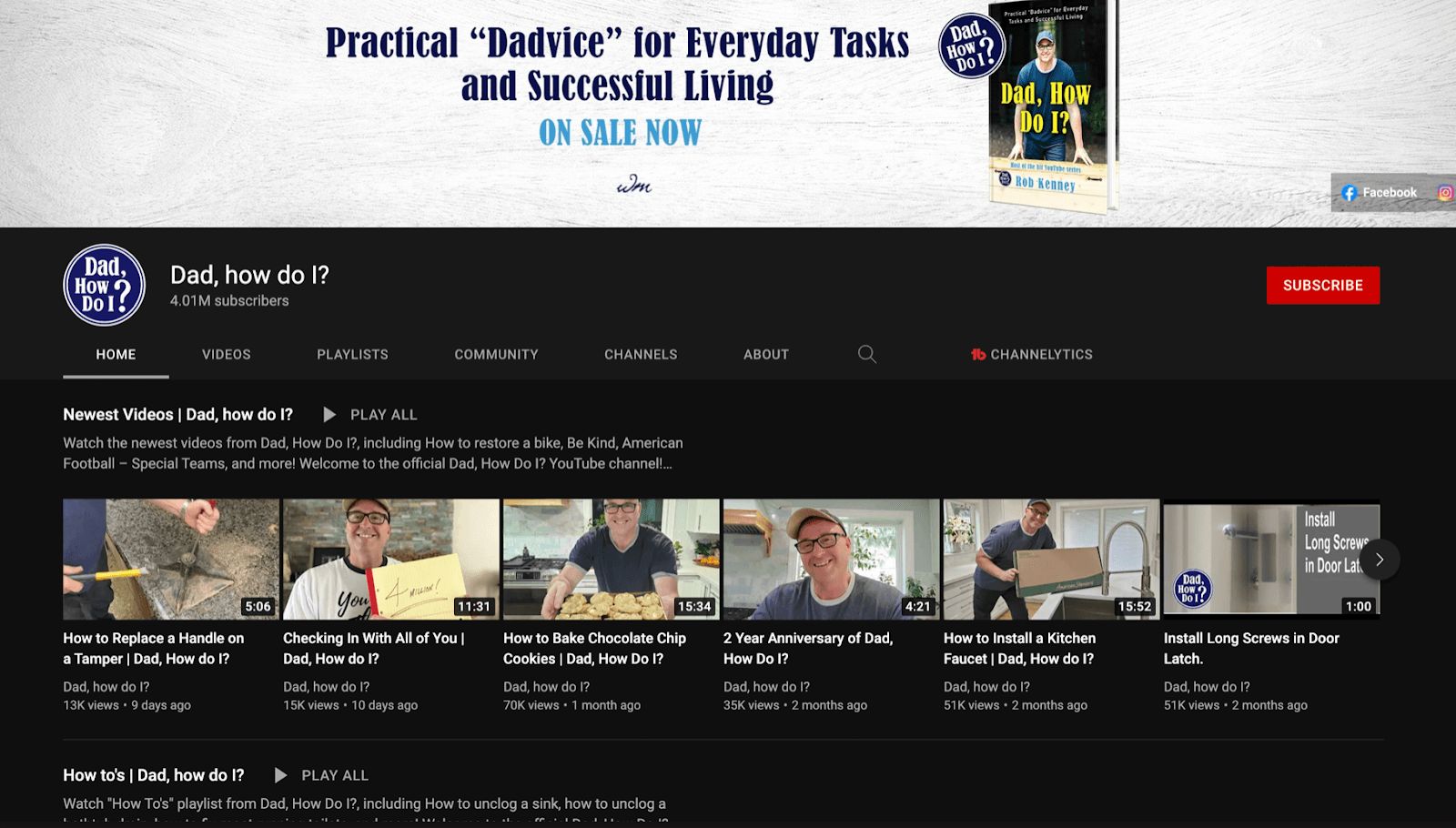
Similar to step #2, research other channels (not just those in your own niche) to get inspiration for how brands look and feel on YouTube.
4. Create your YouTube account
To create a YouTube channel, you’ll need a Google account. If you don’t have one already, create one now. Once you have a Google account, go to YouTube and sign in.
It’s as simple as that!
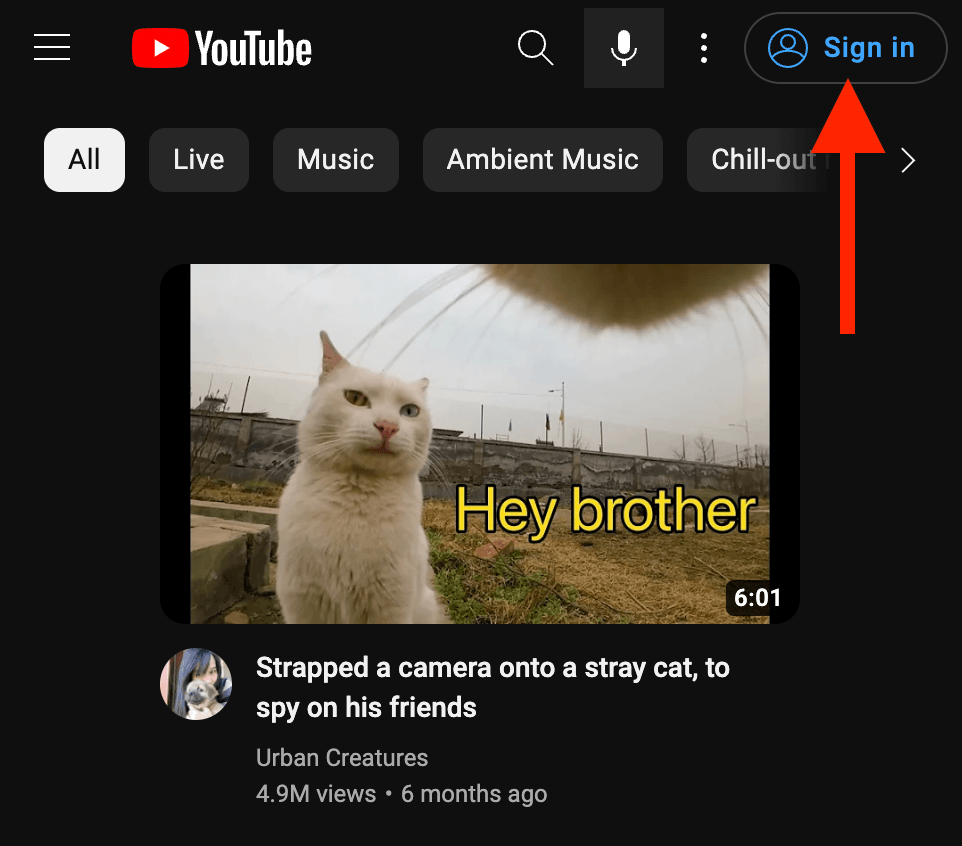
5. Set up your YouTube channel
Setting up your channel is easy. Click on your profile icon and select “Create a channel.” Follow the prompts to set up your channel name, description, and profile picture. Be sure to fill out all of this information accurately and completely. This will help your channel appear more professional and attract more viewers.
6. Create your first YouTube video
Now it’s time to create your first video. You don’t need expensive equipment to get started. Your smartphone camera will do just fine.
Choose a topic that you’re passionate about and start recording. Don’t worry too much about making it perfect — your first video is just a starting point.
It’s going to take time to see results. When YouTube megastar MKBHD was on the SPI Podcast, he said that his first 100 videos were for less than 100 subscribers. Today, he has over 16 million subscribers and counting.
Filming and editing videos can often derail the excited first-timer, but I definitely recommend you push through and learn as you go. If you’d like some direct help and to join a community while building a YouTube channel with others, I recommend checking out the SPI All-Access Pass, which gives you access to all of our courses (including YouTube from Scratch) as well as access to a community and my team to guide you along the way!
7. Create a great title and thumbnail for your YouTube video
Titles and thumbnails are incredibly important: they’re the first things people see before they watch any part of your video!
Choose a title that captures attention, but don’t get over-the-top and clickbaity. Some “bait” is important, but whatever you choose for both your title and thumbnail, make sure you deliver on the promise.
There are a lot of resources for creating great thumbnails. I recommend checking out Nate from Channel Makers and his video about thumbnails here as a starting point.
As a reminder, it’s not going to be perfect, and you can always change your title and thumbnail later. Do your best, then move onto the next step.
Tip: a great tool for creating thumbnails is Canva! Canva has a lot of templates specific to YouTube thumbnails that you can choose from.
8. Publish your first YouTube video
Hitting publish can be scary, but it’s the only way to learn what works and what doesn’t. Hit publish and be proud of the fact that you created something and shared it with the world! It’s like planting a seed: it’s now where it needs to be to have a chance to grow and thrive.
In most cases, you’re not going to get a flood of views right away, and sometimes YouTube needs time to find the right audience for your videos. That’s where the next step comes into play.
9. Pay attention to your YouTube channel’s analytics
Paying attention to your analytics helps you improve over time and understand exactly what’s happening with your videos, good and bad.
Here are the two most important metrics you want to pay attention to:
- Click-through rate: This is an indicator of how many people click to watch your video compared to the number of impressions (people who saw your video title and thumbnail) your video had. In other words, are people liking the title and thumbnail enough to click through? Shoot for a 5 percent or more click-through rate. Anything below that, you can always make improvements over time.
- Average view duration: This is how long a person watches an individual video. The longer you can keep people watching, the more likely YouTube will serve your videos to more people. Pay attention to your retention graph, which can show you how sticky your video is. This can be found in the engagement tab in your analytics.
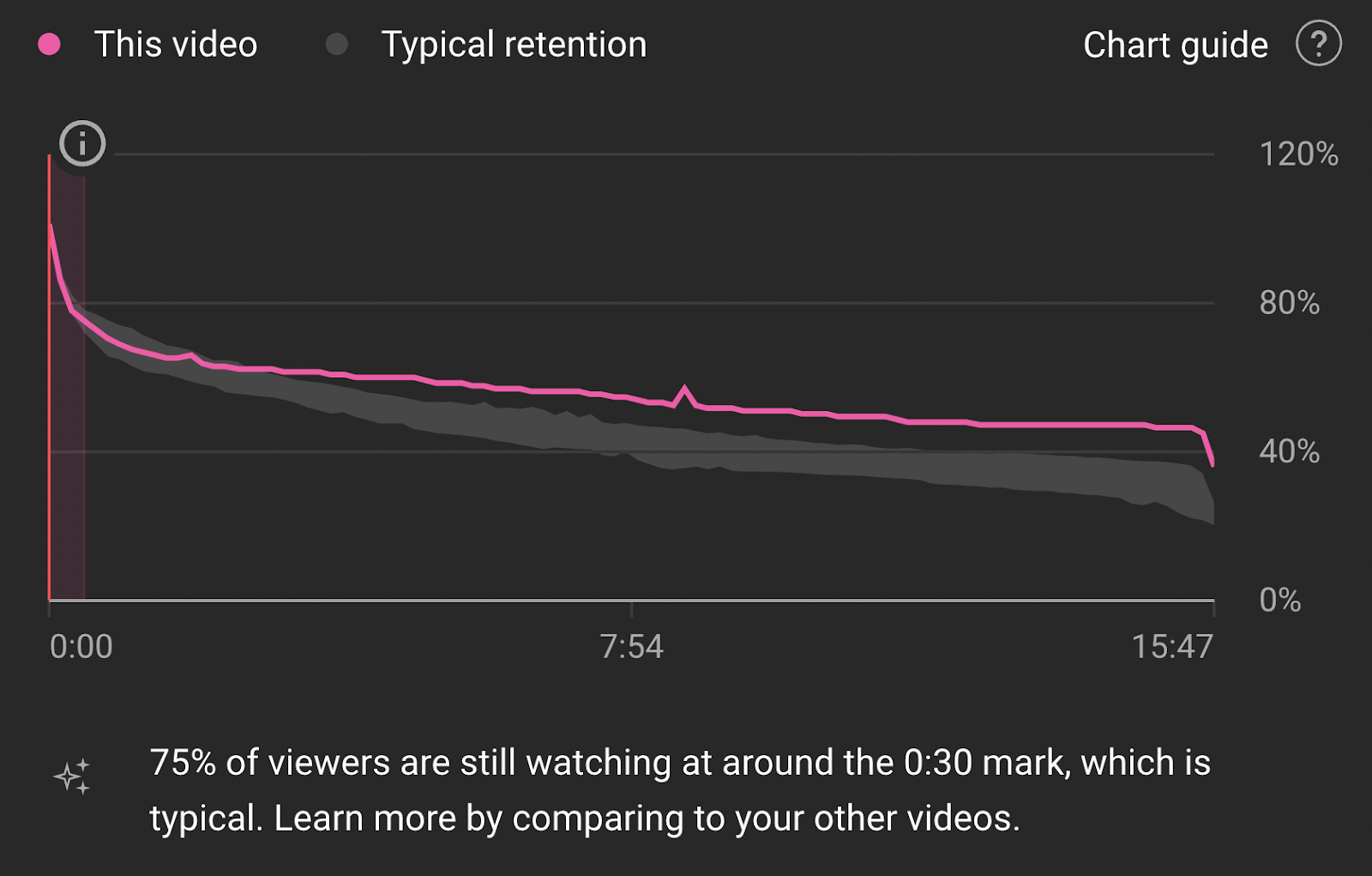
Holding the attention of your audience is a huge factor in the success of your videos and your channel.
10. Create a content calendar for your YouTube channel
Consistency is important on YouTube. As best as possible, you’ll want to publish videos on a regular schedule.
Create a content calendar to plan out your videos in advance. This can help you stay organized and ensure that you’re uploading new content on a regular basis. Your content calendar can include the topics of upcoming videos, the date you plan to upload and publish them, and any other relevant information.
Choose a frequency that works for you and the time you have available to create and upload videos. If you have the ability to create more, especially early on, that will help you more quickly refine your workflow and what works and what doesn’t for your particular audience. But be careful about overextending yourself and burning out to the point where you no longer come out with videos on a regular basis. It happens more often than not.
11. Promote your YouTube videos
Promoting your videos is an important part of growing your YouTube channel. Share your videos on social media, embed them on your website or blog, and collaborate with other creators to reach a wider audience. You can also use YouTube’s built-in promotion tools, like paid ads and featured videos.
12. Engage with your YouTube channel’s audience
Engaging with your audience is crucial for building a community around your channel. Respond to comments, ask for feedback, and create videos based on your audience’s interests and requests. This can help you build a loyal fanbase and keep them coming back for more.
13. Monetize your YouTube channel
Once your channel has grown, you may be eligible to monetize your videos. This can include earning money from ads, sponsorships, and merchandise sales. To monetize your channel, you’ll need to meet YouTube’s Partner Program requirements. This includes having at least 1,000 subscribers and 4,000 watch hours in the past 12 months. Once you meet these requirements, you can apply to join the Partner Program and start earning money from your videos!
14. Collaborate with other YouTube creators
Collaborating with other creators can be a great way to reach new audiences and create high-quality content. Reach out to other creators in your niche and propose collaboration ideas. This can help you build relationships and grow your channel. You can also participate in YouTube collaborations like tags and challenges to reach a wider audience.
15. Stay up-to-date with YouTube trends and algorithm changes
YouTube’s algorithm is constantly changing, so it’s important to stay up-to-date with the latest trends and updates. Follow industry blogs, attend conferences, and engage with other creators to stay informed. This can help you stay ahead of the curve and create content that performs well on the platform.
My favorite channel for this is YouTube Creators, which is run by the YouTube team itself. I also enjoy Sean Cannell, Roberto Blake and ChannelMakers for updates, too!
15. Conclusion
Starting a YouTube channel can be a fun and rewarding experience. By following these steps, you can create a successful channel that reflects your passion and personality. Remember to stay consistent, engage with your audience, and always strive to improve. Happy YouTubing!
FAQs:
- Do I need expensive equipment to start a YouTube channel?
- No, you can start with just your smartphone camera. As your channel grows, you can invest in more equipment.
- Can I monetize my channel right away?
- No, you’ll need to meet YouTube’s Partner Program requirements before you can monetize your videos, which includes having at least 1,000 subscribers and 4,000 watch hours in the past 12 months
- How often should I upload new videos?
- Consistency is key on YouTube, so aim to upload new videos on a regular schedule that works for you. Quality is important, however, so do your best to create great videos that your audience can enjoy.
- Can I collaborate with other creators outside of my niche?
- While it’s possible, collaborating with creators within your niche can be more effective for reaching your target audience.
- How long does it take to grow a successful YouTube channel?
- There’s no set timeline for success on YouTube. It can take months or even years to build a loyal audience and monetize your videos. Keep working hard and stay committed to your channel!



